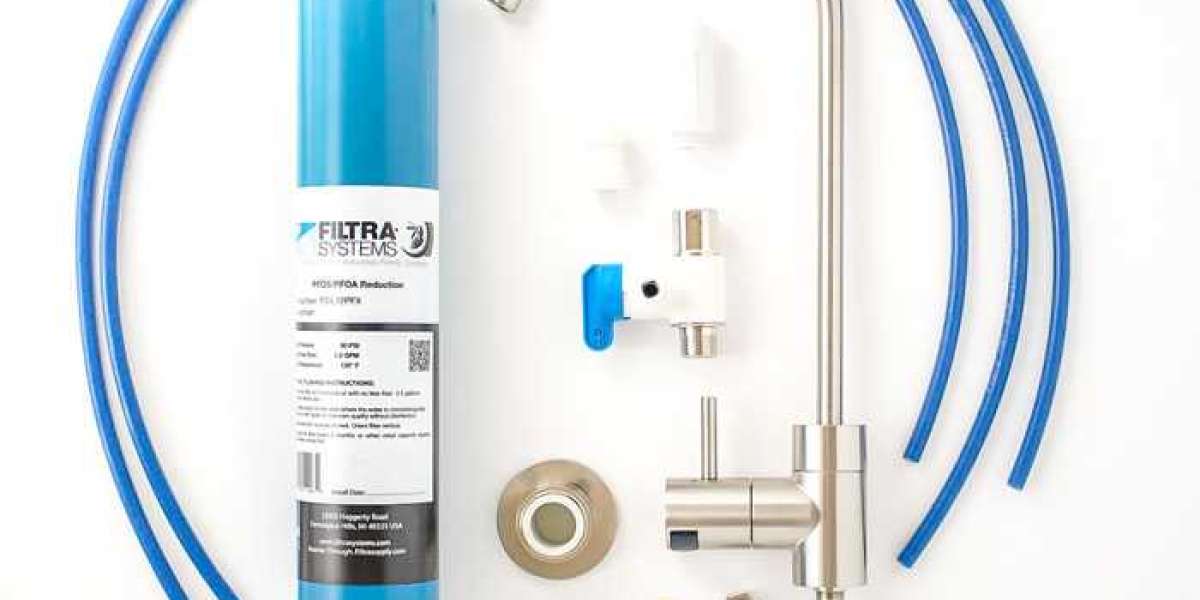The report "PFAS Filtration Market by Technology (Water Treatment Systems, Water Treatment Chemicals), Place of Treatment (In-Situ, Ex-Situ), Remediation Technology, Environmental Medium, Contaminant Type, and Region - Global Forecast to 2030", PFAS filtration market is projected to reach USD 2.99 billion by 2030 from USD 2.13 billion in 2025, at a CAGR of 7.0% during the forecast period.
Browse in-depth TOC on "PFAS Filtration Market"
201 – Tables
53 – Figures
221 – Pages
Download PDF Brochure: https://www.marketsandmarkets.com/pdfdownloadNew.asp?id=98118970
The PFAS filter market is growing quickly due to escalating environmental issues, regulatory pressures, and increased public awareness of the health hazards caused by PFAS contamination. PFAS represents a group of nearly 15,000 artificial chemicals heavily used in industrial applications and consumer products because of their heat, water, and oil resistance. Nonetheless, their persistence in the environment and linkage to severe health conditions such as cancer and immune system compromise have prompted governments worldwide to implement stricter regulations on viable PFAS levels within water sources. Industries, municipalities, and water utilities are thus spending heavily on state-of-the-art filtration technologies to achieve compliance and protect public health. Of interest are treatment technologies such as granular activated carbon (GAC), ion exchange resins, reverse osmosis (RO), and nanofiltration (NF), of which membrane-based technologies like RO and NF are the most rapidly growing segments due to their superior removal efficiency. High government investments, such as the US EPA's USD 50 million investment in PFAS cleanup and technology development, drive new growth and innovation opportunities. The PFAS filtration market is bound to grow at a stable rate with a growing need for clean and safe water in view of mounting challenges like high treatment expenses and complicated waste management.
Activated carbon segment to hold largest market share during forecast period
Activated carbon is also the most common technology used for PFAS filtration due to its effectiveness, affordability, and simplicity. Activated carbon removes PFAS through adsorption, where the pollutants stick to the surface of porous carbon. Granular activated carbon (GAC) is particularly selected in municipal and industrial water treatment due to its high surface area and capacity for adsorbing long-chain PFAS like PFOS and PFOA. It is typically used as a first line of treatment and can be integrated relatively easily into the existing filtration systems. The carbon eventually becomes saturated and needs replacing or regenerating, which adds to operating expenses. Despite these issues, activated carbon remains the solution of choice for most individuals due to its successful history, inexpensiveness, and ubiquitous availability. It is generally used in combination with other technologies, such as ion exchange or membrane filtration, to achieve additional PFAS removal. With tightening regulations and treatment mandates, activated carbon remains at the forefront of international endeavors to contain PFAS contamination.
Request Sample Pages: https://www.marketsandmarkets.com/requestsampleNew.asp?id=98118970
Municipal segment to hold largest market share during forecast period
The municipal segment is expected to hold the largest share of the PFAS filtration market due to increasing regulatory pressure and the need to provide safe drinking water to large volumes of citizens as quickly as possible. Municipal water treatment facilities are generally the primary defense against the contamination of public water supplies by PFAS. With growing acknowledgment of the health hazards posed by PFAS, i.e., cancer, endocrine disruption, and immunosuppression, governments are placing stricter regulations on the application of PFAS in potable water. This is compelling municipalities to retrofit or invest in new technology-based treatments such as granular activated carbon (GAC), ion exchange resin, and membrane-based reverse osmosis and nanofiltration equipment. Urban metropolitan systems also have increased access to capital, such as federal and state funding, to finance the installation of more comprehensive and effective treatment methods for the contaminants. Also, the ubiquitous occurrence of PFAS in urban stormwater, wastewater, and formerly contaminated sites makes municipalities a prime target for remediation focus areas. The municipal segment will likely remain at the leading edge of the PFAS filtration business, fueling continued investment and innovation in high-capacity, scalable water treatment technology.
North America to be largest regional market during forecast period
North America is expected to lead the PFAS filtration market driven by stringent regulatory policies, a high level of public education, and extensive government expenditure on environmental sustainability. The US, in particular, has led the way on PFAS regulation, with the EPA establishing tighter PFAS drinking water standards. Existing measures, such as the Superfund designation of PFOA and PFOS as hazardous chemicals, have also spurred cleanups nationwide. Additionally, the federal administration has committed high investments—in the form of the EPA's USD 50 million—in support of PFAS cleanup and the development of next-generation filtration technology. The widespread contamination of PFAS in groundwater, surface water, and municipal water supplies due to widespread industrial and military uses over many decades has made PFAS treatment among the highest priorities in North America. Modern technologies like reverse osmosis, nanofiltration, and ion exchange with high uptake rates are also leading the market growth in the region. As the industry continues to face new developments in regulations, extensive research capabilities, and higher and higher clean water demand, North America represents the biggest, most vibrant PFAS filtration market for the near future.
The PFAS filtration market comprises several key players, including Veolia (France), AECOM (US), WSP (Canada), Clean Earth (US), Wood (UK), Xylem (US), Jacobs (US), TRC Companies, Inc. (US), Battelle Memorial Institute (US), Cyclopure, Inc. (US), Calgon Carbon Corporation (US), Regenesis (US), Mineral Technologies, Inc. (US), CDM Smith, Inc. (US), and Pentair (UK).
Top 10 Key Players in the PFAS Filtration Market
DuPont
A major innovator in membrane and ion exchange technologies, DuPont provides PFAS solutions across municipal and industrial sectors using advanced reverse osmosis (RO) and nanofiltration membranes.3M
While 3M has been phasing out PFAS-based products, it remains a significant player in PFAS mitigation through filtration and environmental remediation technologies.Evoqua Water Technologies (now part of Xylem)
Specializing in activated carbon, ion exchange resins, and membrane systems, Evoqua provides customizable PFAS removal solutions for drinking and wastewater treatment.Pentair
Known for its residential and industrial filtration systems, Pentair offers granular activated carbon (GAC) and RO technologies to target PFAS contaminants.Calgon Carbon Corporation
A Kuraray company, Calgon Carbon is a global leader in activated carbon production, a widely used method for PFAS removal in municipal water systems.Veolia Water Technologies
Veolia delivers turnkey PFAS filtration systems using combinations of GAC, RO, and advanced oxidation processes (AOP) for industrial and municipal clients.SUEZ – Water Technologies Solutions (now part of Veolia)
Provides integrated water treatment solutions with strong PFAS remediation capabilities using GAC, membrane, and ion exchange technologies.Purolite (an Ecolab company)
A leader in ion exchange resins specifically engineered for PFAS removal, Purolite supports large-scale remediation projects and regulatory compliance.Bluewater Group
Focused on household and commercial filtration, Bluewater utilizes proprietary RO systems to ensure PFAS-free drinking water.Hydranautics (A Nitto Group Company)
Offers advanced membrane solutions tailored for PFAS removal in high-purity and industrial water applications.
Request Customization: https://www.marketsandmarkets.com/requestCustomizationNew.asp?id=98118970
Table of Content:
1 Report Overview
1.1 Product Definition and Scope
1.2 PEST (Political, Economic, Social, and Technological) Analysis of PFAS Filtration Market
2 Market Trends and Competitive Landscape
3 Segmentation of PFAS Filtration Market by Types
4 Segmentation of PFAS Filtration Market by End-Users
5 Market Analysis by Major Regions
6 Product Commodity of PFAS Filtration Market in Major Countries
7 North America PFAS Filtration Landscape Analysis
8 Europe PFAS Filtration Landscape Analysis
9 Asia Pacific PFAS Filtration Landscape Analysis
10 Latin America, Middle East Africa PFAS Filtration Landscape Analysis
11 Major Players Profile



